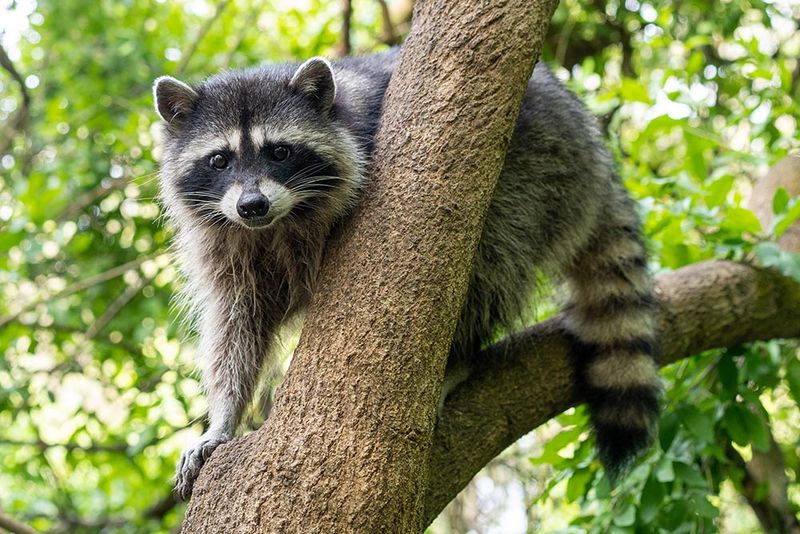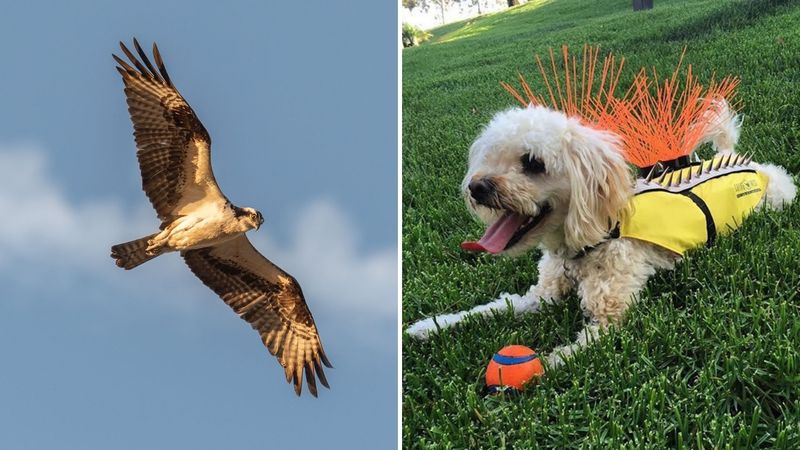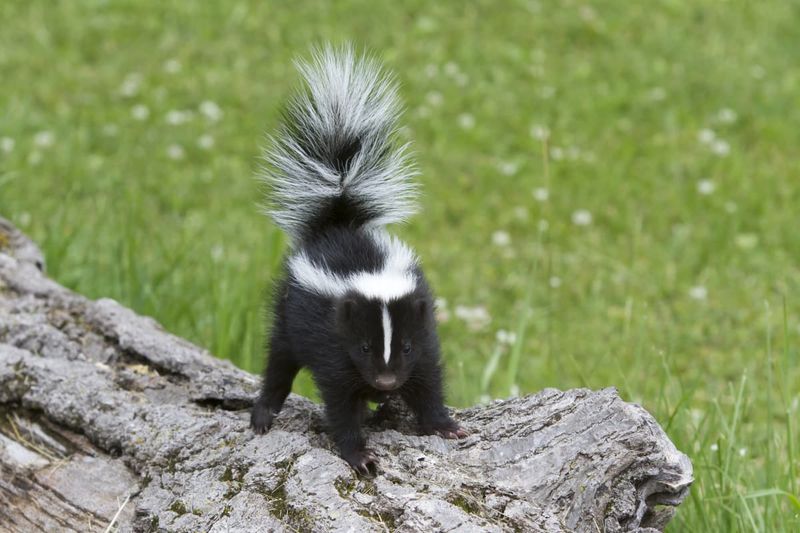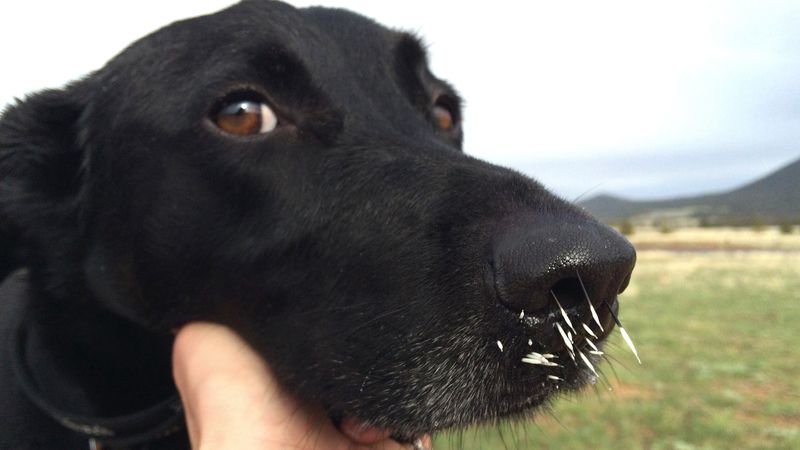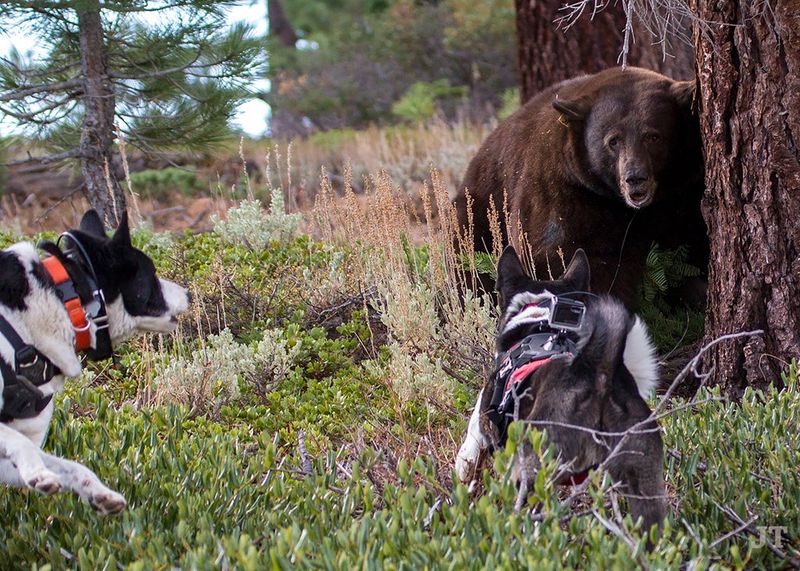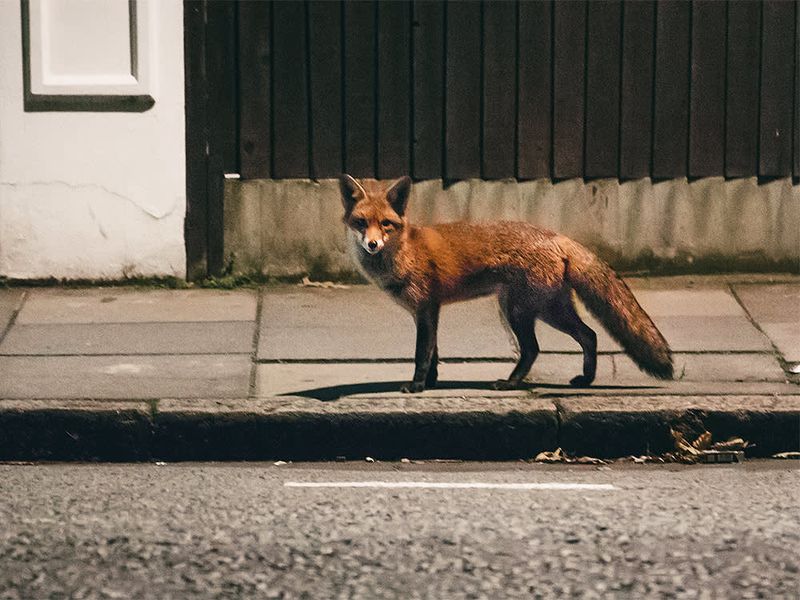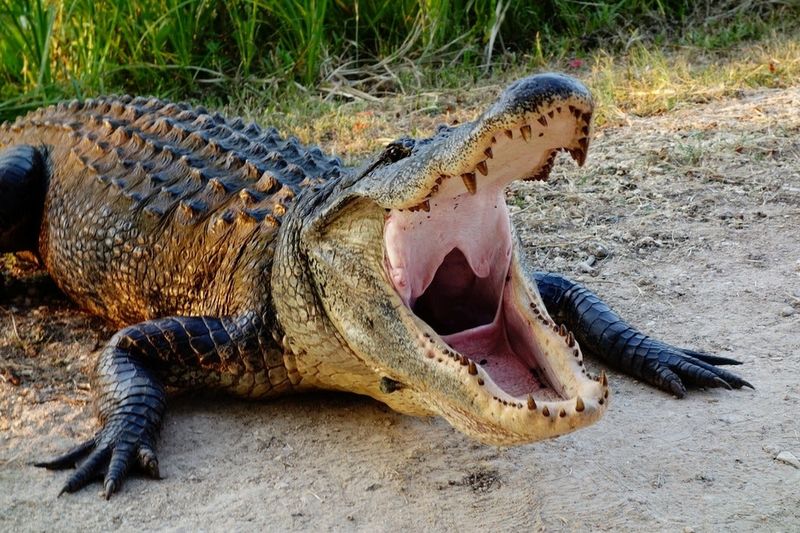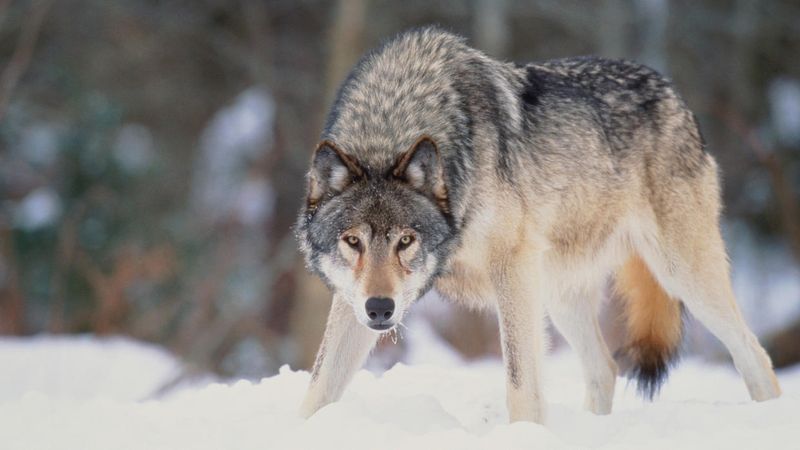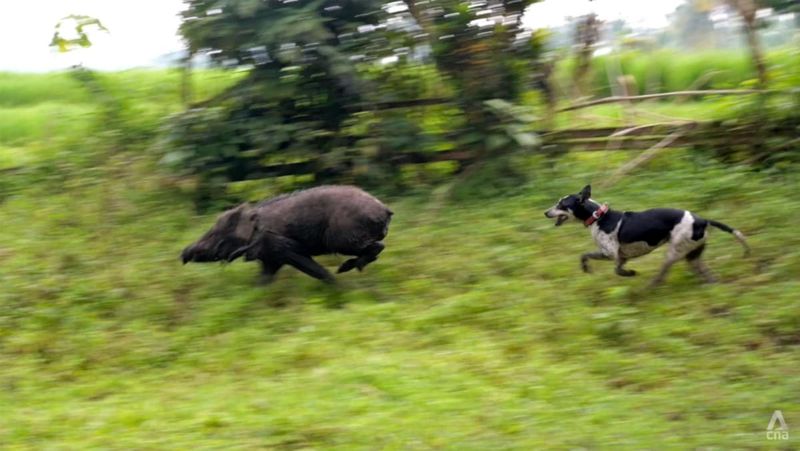Dogs, our loyal companions, often face threats from various animals when venturing outdoors. Understanding these threats and knowing how to safeguard your furry friend is crucial for their well-being. This guide explores twelve common animal threats to dogs and offers insights on how to protect them from each risk.
Coyotes
Coyotes are clever creatures, often living in close proximity to urban areas. They have adapted to human environments, making encounters with pets more frequent. With a sleek and agile build, they can swiftly become a threat to small to medium-sized dogs.
To protect your dog, always supervise them when outdoors, especially at dawn or dusk when coyotes are most active. Installing motion-activated lights in your backyard can deter these nocturnal hunters.
Did you know? Coyotes are highly territorial and often hunt in pairs or small packs, increasing the risk to solitary pets.
Raccoons
Raccoons may seem adorable, but they can pose significant threats to dogs, especially if cornered or protecting their young. Their rabies risk adds to the danger they present. These masked bandits are primarily nocturnal, rummaging through garbage and gardens.
To keep them away, secure trash bins and avoid leaving pet food outside. Vaccinations are essential to shield your pet from potential diseases.
Fun fact: Raccoons have highly dexterous front paws, making them excellent at opening containers and doors, hence their nickname ‘nature’s burglars.’
Snakes
Snakes, with their silent and stealthy nature, can be a hidden danger in yards and hiking trails. Depending on the region, venomous snakes like rattlesnakes or copperheads may pose significant risks to dogs.
Training your dog to avoid snakes and keeping them leashed in snake-prone areas can prevent dangerous encounters. Snake-proof fencing around your yard adds an extra layer of safety.
Intriguingly, some snakes use their tails to mimic the sound of a rattlesnake, a deceptive tactic to ward off threats, including curious pets.
Birds of Prey
Birds of prey, like hawks and eagles, might view small dogs as potential prey. With their sharp talons and keen eyesight, they can swoop down quickly and silently. Protecting petite-sized dogs means staying vigilant during outdoor adventures.
Keep small pets close, especially in open spaces where these birds hunt. Providing shelter areas in your yard can offer dogs a safe spot to retreat to.
Did you know? Eagles have been known to carry off animals as heavy as 15 pounds, making them formidable aerial predators.
Skunks
Skunks are infamous for their pungent spray, which can cause temporary blindness and intense discomfort for dogs. While they are generally non-aggressive, they will not hesitate to defend themselves if they feel threatened.
Prevent encounters by keeping your dog on a leash during evening walks and ensuring your yard has no hiding spots or denning areas.
Interestingly, skunks give a fair warning before spraying, such as stomping their feet or hissing. Recognizing these signals can help avert a smelly showdown.
Porcupines
Porcupines are solitary, slow-moving animals, but their quills present a painful hazard for curious dogs. If threatened, they release these sharp quills, which can embed deeply into a dog’s skin.
Ensure your dog stays away from these creatures by keeping them leashed in wooded or rural areas. Immediate veterinary care is crucial if quills become lodged.
Fun fact: Contrary to popular belief, porcupines cannot shoot their quills, but they easily detach when touched, becoming a defensive weapon against predators.
Bears
Bears are powerful and unpredictable, making them one of the more serious threats to dogs in forested regions. Even though they usually avoid human interactions, a protective bear can be dangerous.
Keeping dogs leashed during hikes, making noise to avoid surprise encounters, and carrying bear spray are effective safety measures. Camping areas should be kept clean to prevent attracting bears.
Did you know? Bears have an incredible sense of smell, estimated to be seven times stronger than a bloodhound’s, aiding them in locating food from miles away.
Foxes
Foxes are generally shy, preferring to steer clear of human contact. However, they might pose a threat to smaller dogs, particularly if they’re protecting a den. Their elusive nature allows them to silently navigate through suburban areas.
To protect your pet, ensure your yard is securely fenced. It’s wise to supervise small dogs during peak dawn and dusk hours.
Interestingly, foxes communicate with a variety of vocalizations, including yips and barks, to alert others of danger or to establish territory.
Mountain Lions
Mountain lions, with their stealth and strength, pose a significant danger to dogs in rural and mountainous regions. Their ability to leap great distances makes them formidable predators.
Avoid hiking at dawn or dusk, keep dogs leashed, and make noise to deter these cats. If confronted, standing tall and making eye contact can help in appearing intimidating.
Did you know? Mountain lions can jump up to 18 feet vertically and cover a distance of 40 feet in a single leap, showcasing their remarkable athleticism.
Alligators
Alligators, often found in the southeastern U.S., pose a significant threat to dogs, especially near water. These formidable reptiles can swiftly strike if threatened or hungry.
Keeping dogs on a leash and avoiding swimming in alligator-inhabited waters are crucial precautions. Fencing your property if near water can further ensure safety.
Intriguingly, alligators have been around for about 37 million years, evolving little over time, which testifies to their effectiveness as apex predators.
Wolves
Wolves, despite their wild allure, can be dangerous for dogs in certain areas. They usually avoid humans but may see dogs as competitors or prey.
Keeping dogs close during hikes in wolf territories and avoiding walking at night minimizes risks. If wolves are spotted, retreat calmly and avoid running, which might trigger their chase instinct.
Fun fact: Wolves have a complex social structure, with a pack hierarchy that includes alphas, betas, and omegas, ensuring group harmony and shared responsibilities.
Wild Boars
Wild boars are formidable opponents with sharp tusks, capable of inflicting serious injuries on dogs. Their aggressive nature, especially when threatened, makes them a significant threat in rural and wooded areas.
Keep dogs on a leash and avoid dense underbrush where boars could be hiding. Loud noises can sometimes scare them away, but caution is always advised.
Did you know? Wild boars are excellent swimmers and have been known to cross rivers and even small seas, showcasing their adaptability and resilience.


